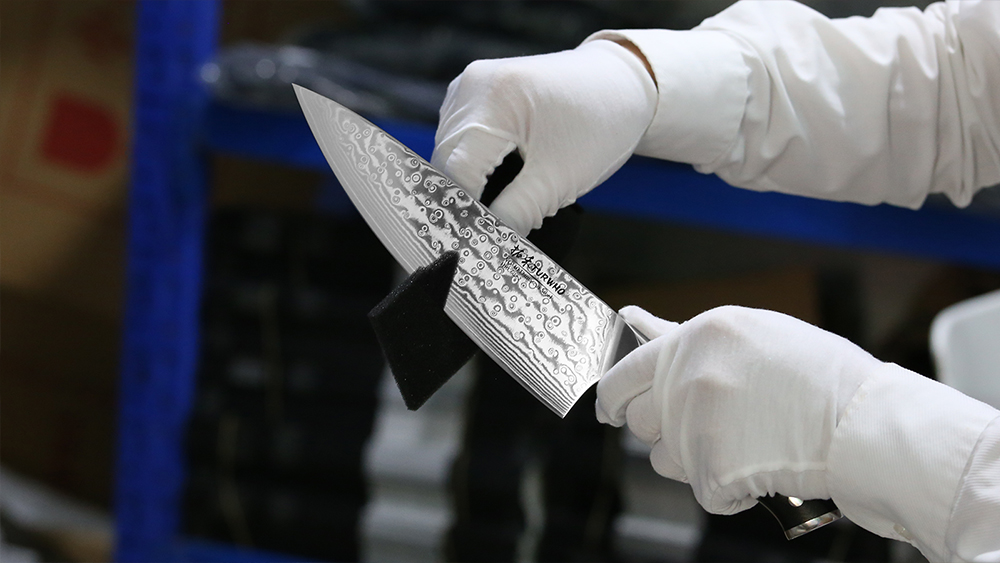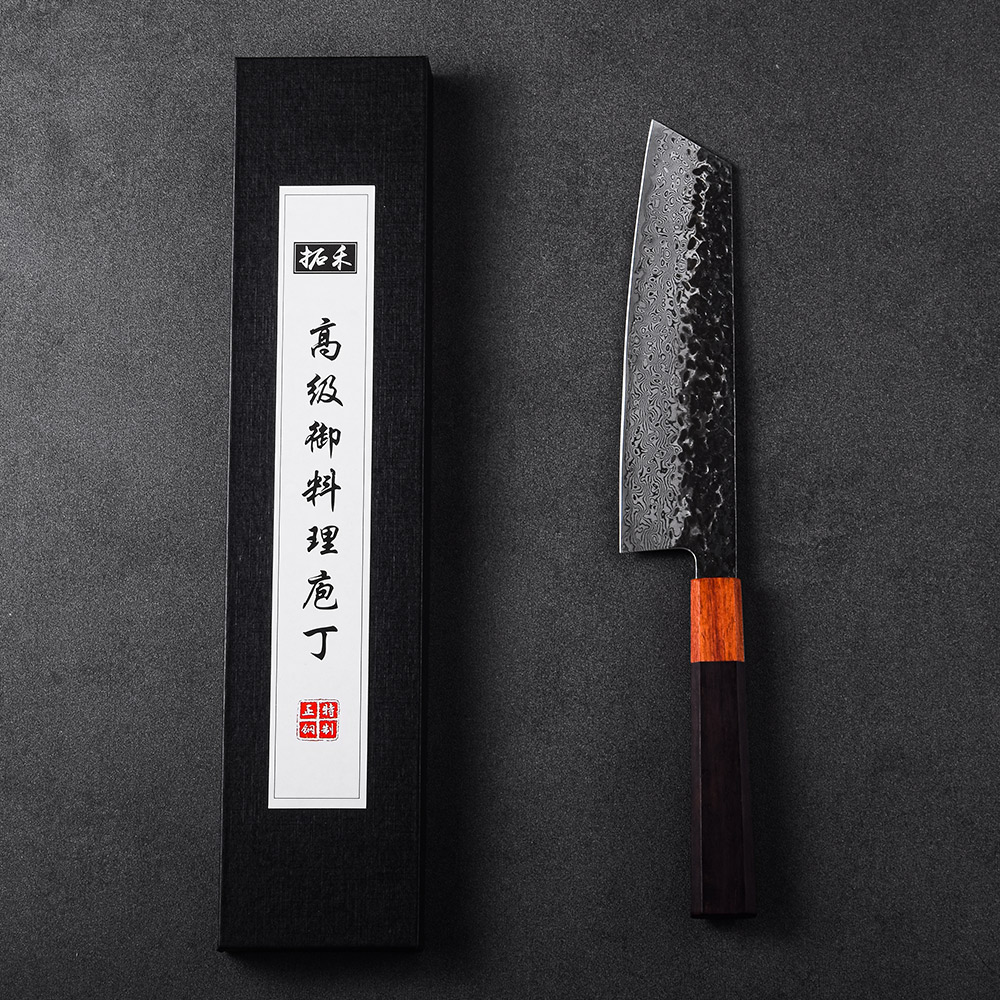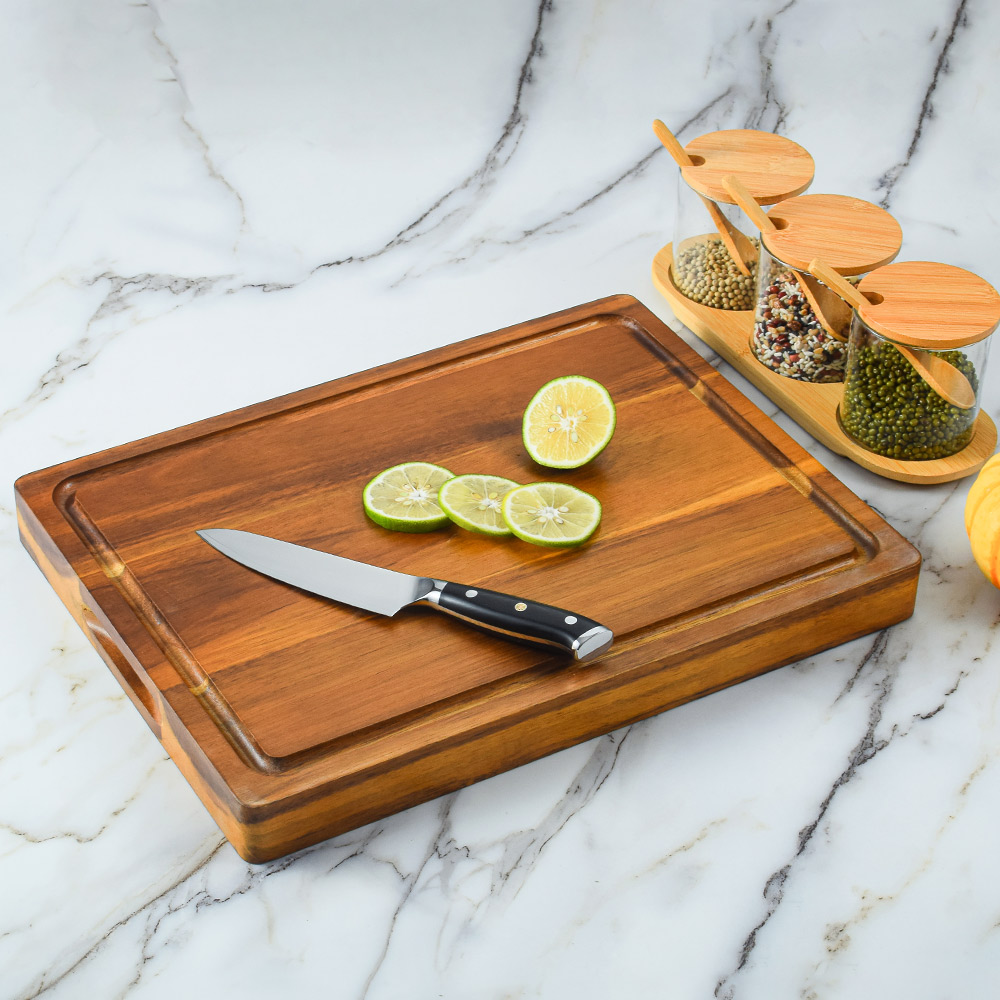Chef's Knives
How to Clean and Store Chef Knife?
Knives do not stay sharp forever. They need to be honed regularly and sharpened occasionally.
When using a dull knife, you are more likely to slip off your food and cut yourself. Sharp knifes provide much better efficiency and precise cuts, whereas dull knifes are more erratic and lead to sliced fingers. So you should keep your chef’s knife sharp.

Care of Knives
A good knife is an investment. With proper care it will last a lifetime.
1. Some knives are dishwasher safe. However, we do not recommend putting knives in the dishwasher. Banging against other cutlery or pots and pans could chip the edge. High heat and detergent can discolor and damage the handle. Instead wipe the knife clean in your sink with a wet cloth or soft sponge and dish soap. Dry immediately.
2. No metal is completely “stainless”. Do not allow acidic foods (lemon, mustard, tomato, etc.) to remain on the blade after use. This may cause some slight tarnishing. Should the blade show signs of staining, use a non abrasive metal polish for cleaning.
3. Do not cut through bone with knives (except meat cleavers). Do not use knives for poking, prying, separating or cutting semifrozen or frozen foods.
4. Do not use knives as screwdrivers or can openers. This is not their designated purpose and may result in bending or breaking the blade or edge of the knife.
5. Generally knife warranty does not cover misuse.

Cutting Surfaces
Cutting surfaces should be smooth, easy to clean and “give” on contact with chef knife edge.
1. Chuanghe recommends: wooden or bamboo cutting boards and quality polyethylene boards.
2. Avoid surfaces that can dull or damage the knife such as china, marble, granite, tile, Formica, porcelain, stainless counter tops and glass.
3. REMEMBER: All cutting boards and surfaces should be cleaned thoroughly immediately after use to avoid harmful bacteria growth.

Proper Knife Storage
Che’s Knives have to be stored in a safe place, protecting the cutting edge and guarding against injuries. These are some options for storing your knives.
1. Magnetic knife bars are convenient and safe for chefs who want to be able to view their blades and easily access them. They attach to the wall and firmly hold knives in place.
2. Knife sheaths not only protect the edge of the blade, but they also protect the sides from scratching. They can be used in combination with a knife roll for easy transportation.
3. A wooden knife block is the best way to store knives on the counter. The size of the block varies with the number of knives to be stored. Most blocks also have a slot for a honing steel and kitchen shears.

Maintaining a Knife’s Edge
It doesn’t matter how careful you are, knives do not stay sharp forever. If you examine a knife under a microscope, you would see that the edge is made up of thousands of small cutting teeth. Through use, the fine teeth on the cutting edge will eventually become misaligned, resulting in a dull knife.
1. It is necessary to realign the teeth on a regular basis with a sharpening steel to renew the cutting edge; this is called honing.
2. Over time, a knife will have to be re-sharpened. This means the cutting edge can no longer be renewed by realigning and has to be reground to bring on a new edge.
3. Do NOT hone serrated knives with a sharpening steel. If a serrated knife becomes dull it should be sharpened by a professional or replaced.
Related Post: Sharpen Kitchen Knives with a Sharpening Whetstone



It’s very helpful. And personally I think we just need a knife holder.